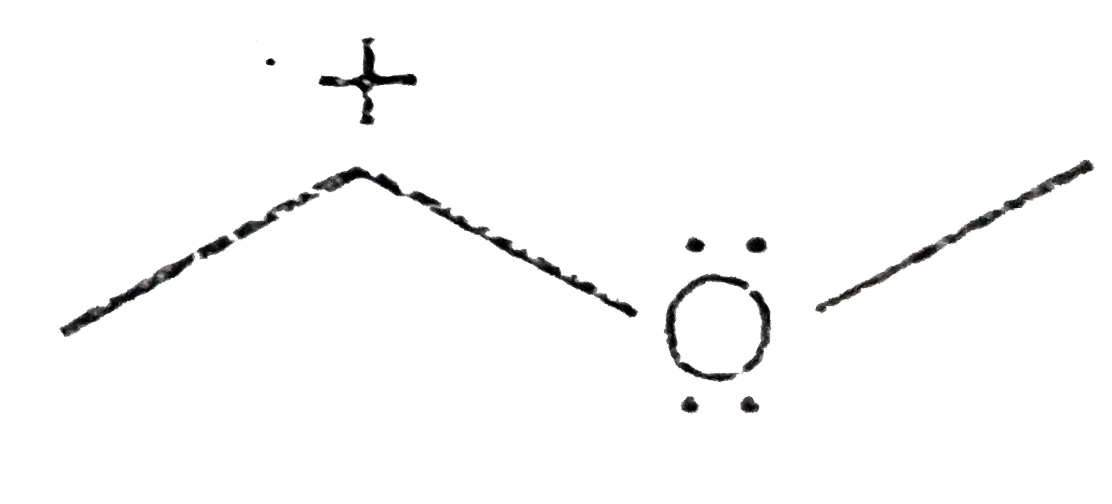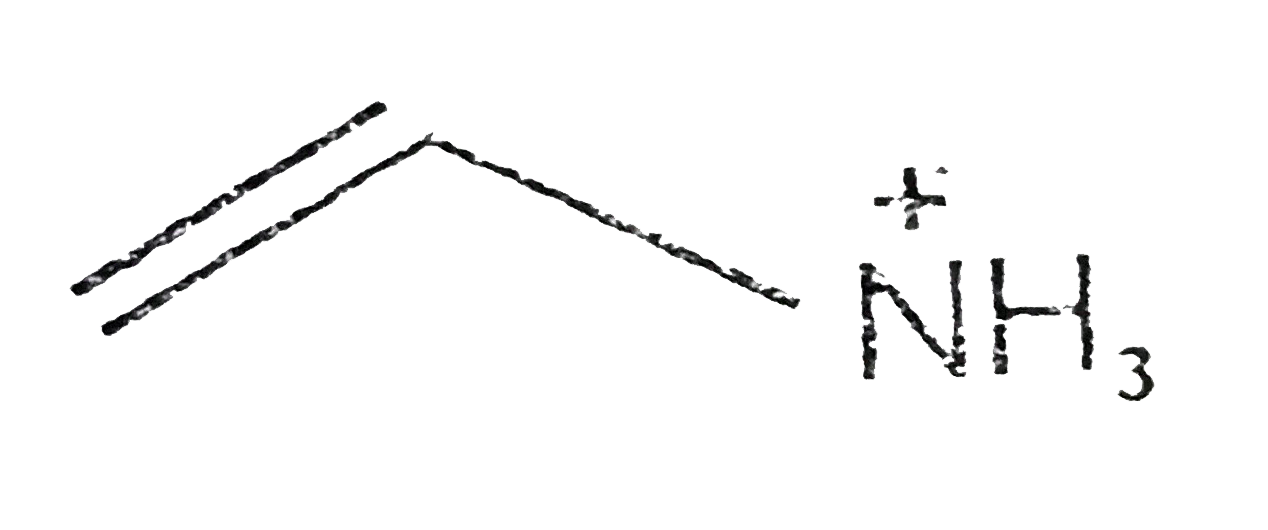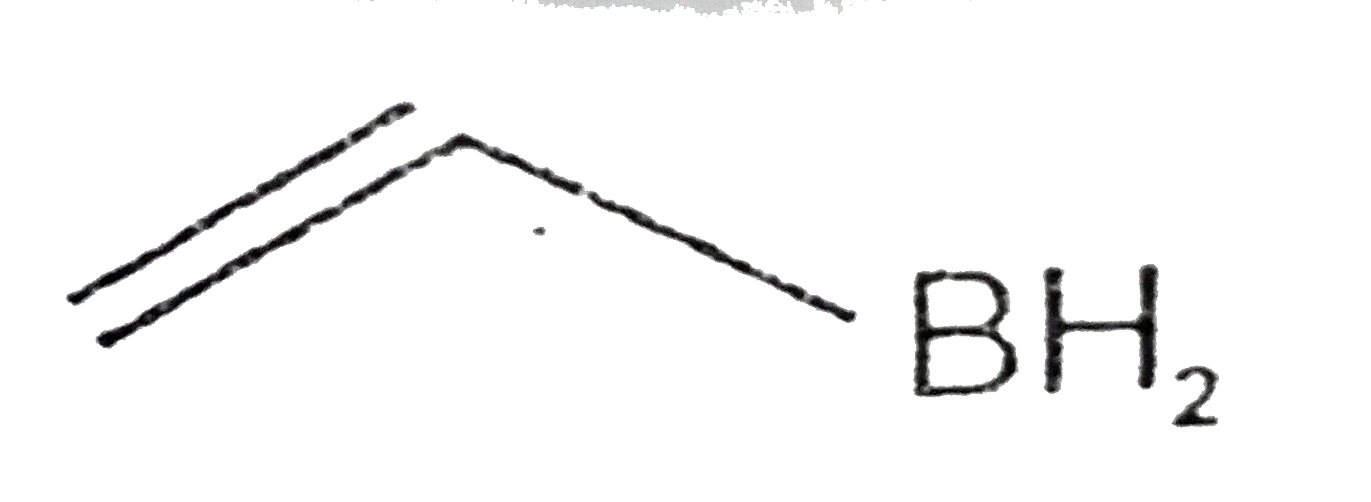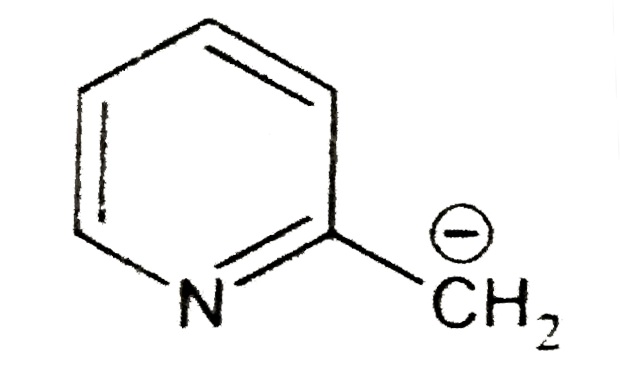Resonance is not possible in




The correct Answer is:B
To solve the question "Resonance is not possible in", we will analyze each of the given options to determine whether resonance can occur.
1. Understanding Resonance:
- Resonance involves the movement of pi electrons within a molecule. For resonance to occur, there must be:
- A lone pair of electrons on one atom.
- An adjacent atom with an empty orbital to accept those electrons.
- The atoms involved must be in the same plane.
2. Analyzing Option 1: CH3CH(+)O(CH3)
- In this structure, the oxygen has a lone pair of electrons and is adjacent to a carbon with a positive charge.
- The lone pair on oxygen can be donated to form a double bond with the carbon, resulting in resonance.
- Conclusion: Resonance is possible in this option.
3. Analyzing Option 2: CH2=CH(+)NH3
- Here, nitrogen has a positive charge and does not have a lone pair of electrons.
- Since nitrogen is positively charged and has only two bonds, it cannot participate in resonance because it lacks the necessary lone pair or empty orbital.
- Conclusion: Resonance is NOT possible in this option.
4. Analyzing Option 3: CH2=CH-NO2
- In this case, the nitrogen in the nitro group (NO2) has a positive charge, and the oxygen atoms have lone pairs.
- The resonance can occur as the lone pairs on the oxygen can interact with the nitrogen, allowing for electron movement and resonance structures to form.
- Conclusion: Resonance is possible in this option.
5. Analyzing Option 4: CH2=CH-BH2
- Boron (B) has an empty p-orbital and can accept electrons. The carbon-carbon double bond can interact with boron.
- The resonance can occur as the electron density shifts towards boron, allowing for resonance structures.
- Conclusion: Resonance is possible in this option.
Final Answer:
- The correct answer is Option 2: CH2=CH(+)NH3, as resonance is not possible in this structure.
- Resonance involves the movement of pi electrons within a molecule. For resonance to occur, there must be:
- A lone pair of electrons on one atom.
- An adjacent atom with an empty orbital to accept those electrons.
- The atoms involved must be in the same plane.
- In this structure, the oxygen has a lone pair of electrons and is adjacent to a carbon with a positive charge.
- The lone pair on oxygen can be donated to form a double bond with the carbon, resulting in resonance.
- Conclusion: Resonance is possible in this option.
- Here, nitrogen has a positive charge and does not have a lone pair of electrons.
- Since nitrogen is positively charged and has only two bonds, it cannot participate in resonance because it lacks the necessary lone pair or empty orbital.
- Conclusion: Resonance is NOT possible in this option.
- In this case, the nitrogen in the nitro group (NO2) has a positive charge, and the oxygen atoms have lone pairs.
- The resonance can occur as the lone pairs on the oxygen can interact with the nitrogen, allowing for electron movement and resonance structures to form.
- Conclusion: Resonance is possible in this option.
- Boron (B) has an empty p-orbital and can accept electrons. The carbon-carbon double bond can interact with boron.
- The resonance can occur as the electron density shifts towards boron, allowing for resonance structures.
- Conclusion: Resonance is possible in this option.
- The correct answer is Option 2: CH2=CH(+)NH3, as resonance is not possible in this structure.
Topper's Solved these Questions
- ORGANIC CHEMISTRY: SOME BASIC PRINCIPLE AND TECHNIQUESBOOK - AAKASH INSTITUTE ENGLISHCHAPTER - ORGANIC CHEMISTRY: SOME BASIC PRINCIPLE AND TECHNIQUESEXERCISE - SECTION-C OBJECTIVE TYPE QUESTION (MORE THAN ONE OPTIONS ARE CORRECT)
18 Videos
- ORGANIC CHEMISTRY: SOME BASIC PRINCIPLE AND TECHNIQUESBOOK - AAKASH INSTITUTE ENGLISHCHAPTER - ORGANIC CHEMISTRY: SOME BASIC PRINCIPLE AND TECHNIQUESEXERCISE - SECTION-D LINKED COMPREHENSION TYPE QUESTIONS
7 Videos
- ORGANIC CHEMISTRY: SOME BASIC PRINCIPLE AND TECHNIQUESBOOK - AAKASH INSTITUTE ENGLISHCHAPTER - ORGANIC CHEMISTRY: SOME BASIC PRINCIPLE AND TECHNIQUESEXERCISE - ASSIGNMENT SECTION-A COMPETITION LEVEL QUESTIONS
50 Videos
- ORGANIC CHEMISTRY : SOME BASIC PRINCIPLES AND TECHNIQUES BOOK - AAKASH INSTITUTE ENGLISHCHAPTER - ORGANIC CHEMISTRY : SOME BASIC PRINCIPLES AND TECHNIQUES EXERCISE - Assignment(Section-D)(Assertion - Reason Type Questions)
15 Videos
- POLYMERSBOOK - AAKASH INSTITUTE ENGLISHCHAPTER - POLYMERSEXERCISE - ASSIGNMENT (SECTION-D)
13 Videos
Similar Questions
Knowledge Check
Resonance is an example of
Aforced oscillationBdamped oscillationCfree oscillationDnone of these
Statement-1: In CO2 molecule resonance is possible.
Statement-2: CO is used in purification of Ni.
Statement-3: H2CO3 is more acidic than H2SiO3.
View SolutionResonance involves :
View SolutionResonance stabilized cation is:
View SolutionThe maximum number of no bond resonating structure is possible in
View Solution
The number of resonating structures possible for
View SolutionAn organic compound contains 66%C and 13.3%H. Its vapour density is 37. The possible number of isomers of resonance is not correct?
View SolutionResonance is delocalisation of :
View Solution
